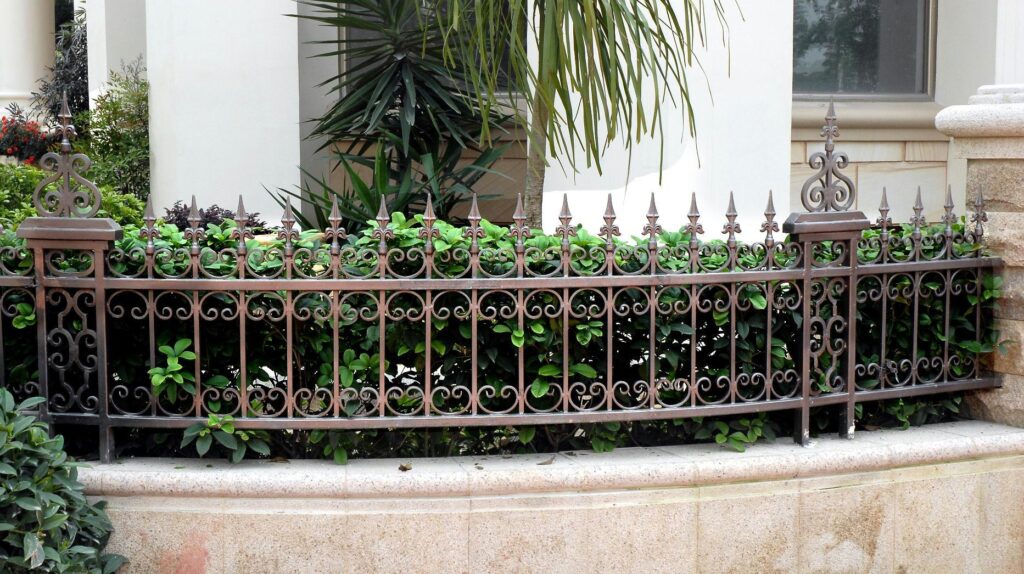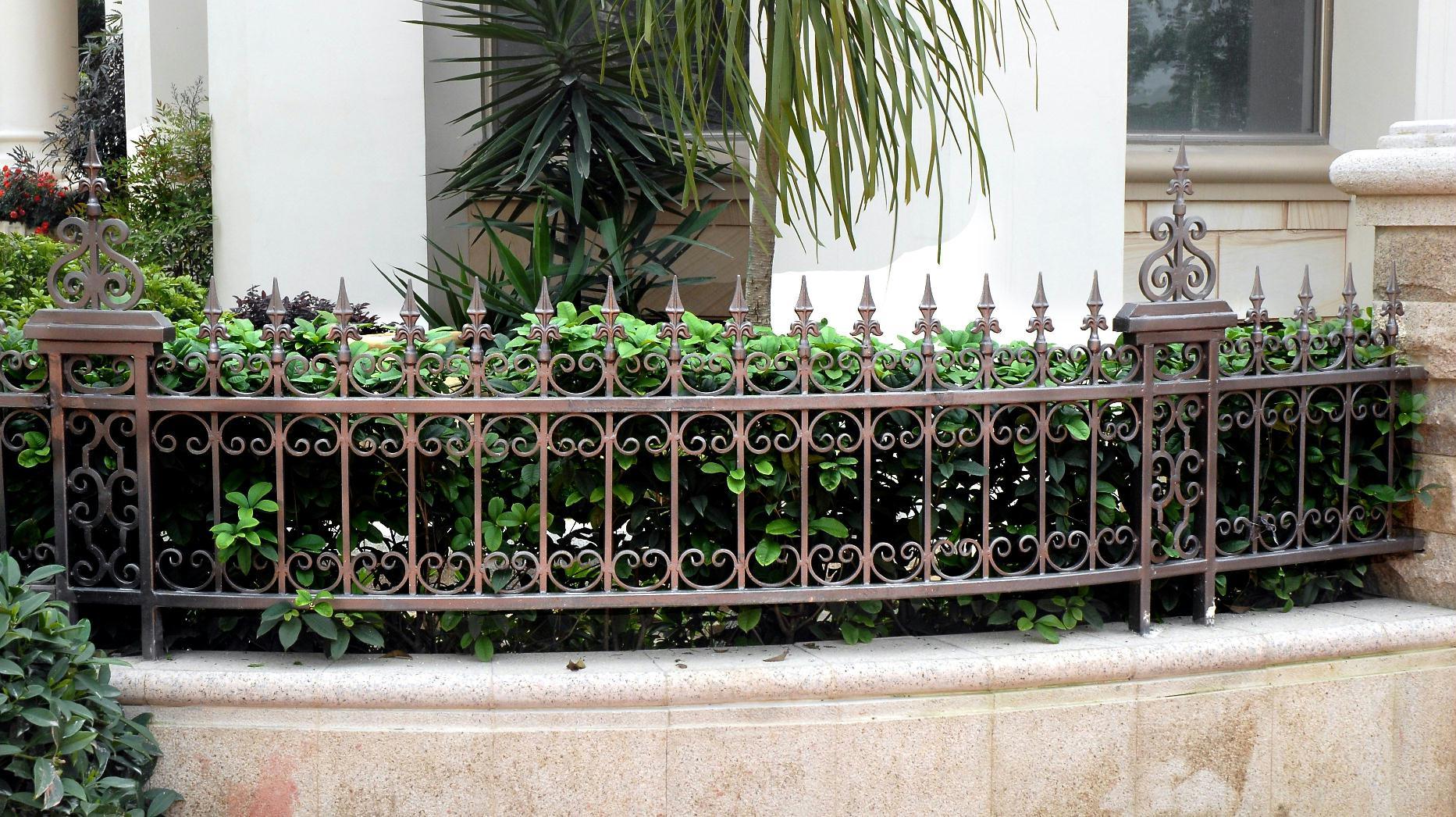
Enhance Your Garden with Decorative Metal Fencing: A Comprehensive Guide
Decorative metal fencing for gardens is more than just a boundary; it’s a statement. It blends functionality with aesthetics, offering security while enhancing the visual appeal of your outdoor space. Whether you’re looking to define garden borders, protect prized plants, or simply add a touch of elegance, the right metal fencing can transform your garden into a captivating sanctuary. This comprehensive guide explores the various aspects of choosing and implementing decorative metal fencing for gardens, ensuring you make an informed decision that aligns with your style and needs.
The Allure of Decorative Metal Fencing
Metal fencing has evolved significantly from its purely utilitarian origins. Today, it’s a design element that can complement any garden style, from classic to contemporary. The durability of metal, combined with its versatility in design, makes it an ideal choice for homeowners seeking both longevity and beauty. Decorative metal fencing for gardens comes in a wide array of styles, materials, and finishes, allowing you to customize your garden’s aesthetic while providing essential protection.
Benefits of Choosing Metal Fencing
- Durability: Metal fences are known for their resistance to weather elements, pests, and general wear and tear. Unlike wood, metal doesn’t rot or decay, ensuring a longer lifespan.
- Security: Metal fencing provides a robust barrier, deterring unwanted visitors and protecting your garden from animals.
- Aesthetic Appeal: With various designs, from ornate wrought iron to sleek modern styles, metal fencing can significantly enhance your garden’s visual appeal.
- Low Maintenance: Once installed, metal fencing requires minimal upkeep. Regular cleaning and occasional painting or sealing are typically sufficient.
- Increased Property Value: A well-designed metal fence can increase your property’s curb appeal and overall value.
Types of Decorative Metal Fencing
Choosing the right type of metal fencing involves considering factors such as your budget, aesthetic preferences, and specific needs. Here’s an overview of popular options:
Wrought Iron Fencing
Wrought iron fencing is the epitome of classic elegance. Known for its intricate designs and robust construction, wrought iron adds a touch of sophistication to any garden. While it’s a pricier option, its durability and timeless appeal make it a worthwhile investment. Proper maintenance, including regular painting or powder coating, is essential to prevent rust and corrosion. Wrought iron decorative metal fencing for gardens often features elaborate scrolls, finials, and custom designs, making it a focal point of your landscape.
Aluminum Fencing
Aluminum fencing offers a balance of affordability, durability, and style. It’s lightweight, easy to install, and resistant to rust, making it a popular choice for homeowners. Aluminum fencing is available in various styles and colors, mimicking the look of wrought iron without the high cost and maintenance. It’s an excellent option for defining garden borders and creating an elegant enclosure. Many decorative metal fencing options in aluminum are powder-coated for added protection and enhanced aesthetics.
Steel Fencing
Steel fencing is a strong and durable option, providing excellent security and longevity. While it’s more susceptible to rust than aluminum, galvanized steel fencing offers enhanced protection against corrosion. Steel fences are available in various styles, from traditional to contemporary, and can be customized to suit your specific needs. Steel decorative metal fencing for gardens is often used in high-security areas or where a robust barrier is required.
Cast Iron Fencing
Cast iron fencing is similar to wrought iron but is manufactured using a casting process. It is heavier than wrought iron and has less design flexibility. While it is durable, it is more prone to rust and requires more maintenance. Cast iron decorative metal fencing for gardens is best suited for historical properties or where replicating a specific period style is essential.
Choosing the Right Style and Design
The style of your metal fencing should complement your home’s architecture and the overall aesthetic of your garden. Consider the following factors when making your selection:
Garden Style
The design of your fence should harmonize with your garden’s style. For a traditional garden, wrought iron fencing with ornate details can enhance the classic look. A modern garden might benefit from sleek, minimalist aluminum or steel fencing. Consider the colors and textures of your plants and landscaping elements when choosing your fence style. Decorative metal fencing for gardens should integrate seamlessly with the existing environment.
Height and Spacing
The height of your fence should be determined by your specific needs. A low fence can define garden borders and add a decorative touch, while a taller fence provides more security and privacy. The spacing between the pickets should also be considered, especially if you have pets or small children. Closer spacing prevents them from escaping or getting stuck. Decorative metal fencing for gardens can be customized with different heights and spacing options to meet your requirements.
Color and Finish
The color and finish of your metal fence can significantly impact its visual appeal. Black is a popular choice for wrought iron and steel fences, offering a classic and elegant look. Aluminum fences are available in a wider range of colors, allowing you to match your fence to your home’s exterior or garden accents. Powder coating provides a durable and attractive finish that resists fading and chipping. Decorative metal fencing for gardens offers numerous color and finish options to enhance your outdoor space.
Installation and Maintenance
Proper installation and maintenance are crucial for ensuring the longevity and beauty of your metal fencing.
Professional Installation
While DIY installation is possible, hiring a professional installer is often recommended, especially for complex designs or large projects. Professional installers have the expertise and equipment to ensure that your fence is properly installed, level, and secure. They can also handle any unexpected challenges that may arise during the installation process. Secure and properly installed decorative metal fencing for gardens ensures lasting beauty and functionality.
DIY Installation
If you’re an experienced DIYer, you can install metal fencing yourself. Start by carefully planning the layout of your fence and marking the locations of the posts. Dig post holes, set the posts in concrete, and allow them to cure completely before attaching the fence panels. Follow the manufacturer’s instructions carefully to ensure a secure and professional-looking installation. Decorative metal fencing kits often come with detailed instructions for easy DIY installation.
Maintenance Tips
- Regular Cleaning: Clean your metal fence regularly with soap and water to remove dirt, dust, and debris.
- Rust Prevention: Inspect your fence regularly for signs of rust. Treat any rust spots immediately with a rust converter or primer before painting.
- Painting or Sealing: Apply a fresh coat of paint or sealant every few years to protect your fence from the elements.
- Repair Damaged Areas: Repair any damaged areas promptly to prevent further deterioration.
Cost Considerations
The cost of decorative metal fencing for gardens varies depending on the type of material, style, and installation method. Wrought iron is typically the most expensive option, followed by steel and aluminum. Professional installation will also add to the overall cost. When budgeting for your fence, consider the long-term benefits of durability, low maintenance, and increased property value. While the initial investment may be higher than other fencing options, the longevity and aesthetic appeal of metal fencing make it a worthwhile choice. [See also: Cost-Effective Garden Fencing Options]
Design Ideas and Inspiration
Here are some design ideas to inspire your decorative metal fencing project:
- Cottage Garden: Use wrought iron fencing with climbing roses and other flowering vines to create a romantic and charming cottage garden.
- Modern Garden: Opt for sleek, minimalist aluminum or steel fencing with clean lines and geometric patterns for a contemporary look.
- Mediterranean Garden: Choose wrought iron fencing with terracotta pots and vibrant flowers to evoke the warmth and beauty of the Mediterranean.
- Formal Garden: Install wrought iron fencing with symmetrical designs and manicured hedges for a classic and elegant formal garden.
Conclusion
Decorative metal fencing for gardens is a versatile and attractive way to enhance your outdoor space. With a wide range of styles, materials, and finishes available, you can customize your fence to complement your home’s architecture and garden design. By considering factors such as durability, security, and aesthetic appeal, you can choose the perfect metal fencing to create a beautiful and functional garden that you’ll enjoy for years to come. Whether you opt for the timeless elegance of wrought iron or the modern simplicity of aluminum, decorative metal fencing is an investment that adds value and beauty to your property. [See also: Garden Design Trends 2024]

